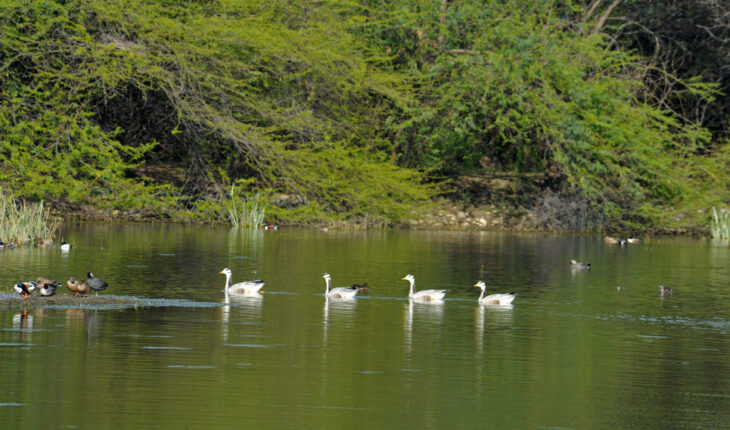Gurugram: With water gently lapping in the breeze at Sultanpur lake, which was just a barren piece of land a few months ago, the surrounding area is also on revival mode.
Five months after the ‘lake’ had nothing more to show than animal car- casses and amphibian and avian skele- tons, life can be seen prancing around here much to the rejoice of animal lovers. The lake is now full of tranquil water and fish, birds and other animals can be seen frolicking around.
Earlier in June, the sole inhabitants here were toads jumping from one dry crack to another, and stray cattle from neighbouring villages. Now, the sight of over 250 species of resident and migratory birds and antelopes (such as Blue Bulls and black bucks) can be enjoyed at the Sultanpur Park, a well- known bird sanctuary near Gurgaon in Haryana. The place is a haven for migratory birds and wildlife.
In June, there were two 20ftx20ft puddles of water, packed with hun- dreds of dying fish. More horrifying was the sight of dead African black fish, with their rotting yellow scales amid the muddy water.
However, the efforts made by the park authorities since and a good mon- soon have borne rich dividends and the lake is now full of water. “We have carried out a number of development works at the sanctuary, including construction of mounds and widening of paths. Four tubewells have also been dug up. More trees, which are popu- lar with the birds, are being planted and four watchtowers set up to enjoy bird-watching,” said Gurgaon wildlife inspector Saeed Khan.
Among the more than 250 avian species found at the sanctuary, birds from Siberia, Europe and Afghanistan can be seen. Thanking the media for highlighting the sorry state of affairs at the park earlier, a park employee said, “Nahi to itna kuch badlav nahi hota aur yeh ghonsla khatam ho gaya hota.”
The Sultanpur lake is the lifeline of Gurgaon’s Sultanpur National Park and Bird Sanctuary, spread over nearly 90 per cent of the 359-acre park. Since 2000, the canal has been the lake’s biggest water provider, besides the monsoon. The canal, owned by the Haryana Government’s irrigation department, could not supply water to the lake after February this year.






